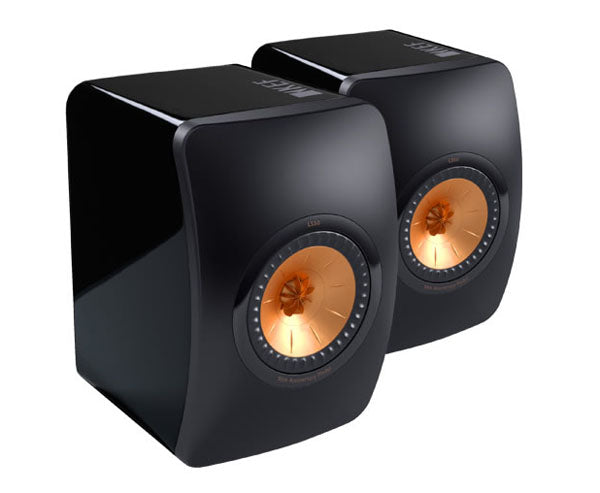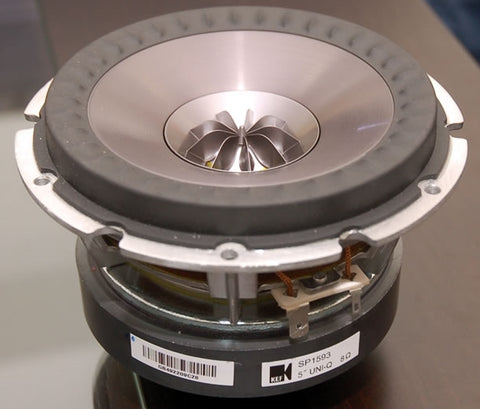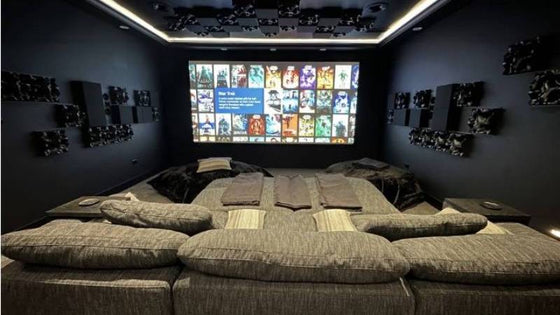Creating a system you love shouldn't be difficult. The Acoustic Frontiers blog is here to help.

This blog article is the fifth in a series on speaker directivity and off axis response. This article will consider the off axis response of coaxial speakers and consequences for acoustic design. Previous articles in the series established the psychoacoustic as well as subjective importance of speaker off axis response, different ways to measure speaker directivity, the off axis characteristics of waveguided and non-waveguided forward firing cone / dome speakers and the off axis characteristics of constant directivity horn waveguide speakers.
A coaxial speaker is one where two or more drive units are physically co-located such that the sound they radiate comes from the same point in space. The most typical arrangement is a coincident midrange and treble, as seen in speakers from KEF, TAD, Tannoy and others.

The major advantage of a coaxial is off axis response consistency in both lateral and vertical planes. Speakers using a vertically stacked driver array can be engineered to measure extremely well laterally off axis but as soon as one moves into the any other plane there will be some lobing resulting from phase cancellation due to path length differences between the two drivers. This can be seen by comparing the vertical off axis measurements of a coaxial and conventional speaker as shown in the KEF LS50 and YG Anat III measurements below.


Acoustically the vertical lobing seen in any conventional vertically stacked speaker means early reflections from the ceiling will timbrally distort the sound perceived at the listening position. What’s more the ceiling reflection in most rooms is often high in amplitude since it is often closer than the side walls. Aggressive treatment, typically using absorbers, of the vertical reflection is therefore required to prevent timbral distortion in rooms with lowish ceilings. In rooms with higher ceilings the reflection can be redirected such that it becomes part of the late arriving field which contributes less to perceived sound. Coaxial speakers allow more freedom in terms of dealing with the ceiling reflection, and could be left untreated.
A second characteristic of some coaxial speakers is that the midrange cone acts as a waveguide for the tweeter, which results in matched directivity. I say some because not all coaxial speakers use the mouth of the midrange cone in the same way.
Coaxial drivers using tweeters with small voice coils can have the tweeter physically co-located with the midrange voice coil. KEF uses this approach in their Uni-Q drivers. The Uni-Q also shows evidence of great care taken to reduce discontinuities at the midrange surround which can cause issues.

Drivers using compression drivers in coaxial arrangements typically have them behind the voicecoil of the midrange. This can be clearly seen in the B&C driver below [as used in Seaton’s Catalyst speakers].

Some manufacturers such as Fulcrum Acoustics have used novel approaches in order to improve their performance and remove perceived issues with the design. Fulcrum list distortion of the tweeter’s output due to modulation by the movement of the woofer at higher volume levels as one of the principal issues with ‘normal’ coaxials – see this page for more details on issues with ‘normal’ professional coaxial drivers.

That wraps up our look at coaxial speakers. Well engineered coaxials are probably the easiest speaker type to design for acoustically because of their superb off axis performance. They don’t offer as much pattern control as some waveguides but their even, relatively wide dispersion makes acoustic treatment design straightforward.
In future articles we’ll look at other speaker designs such as dipoles and CBTs. In the meantime please leave any comments you have below!
Learn how early home theater design, layout, and acoustic treatment improve performance in new home construction.
This media room was intentionally designed to feel like part of the home—not a separate, tech-heavy space. Through careful acoustic planning, equipment integration, and final calibration, we achieved a room that is both beautiful to live in and immersive to experience.
"No other subwoofer system I’ve owned even comes close to what this room delivers. Reaching out to Acoustic Frontiers was one of the best decisions I’ve made—I highly recommend working with them if you want to get the most out of your theater."

Nyal Mellor, Founder, Acoustic Frontiers



Nyal Mellor
Author